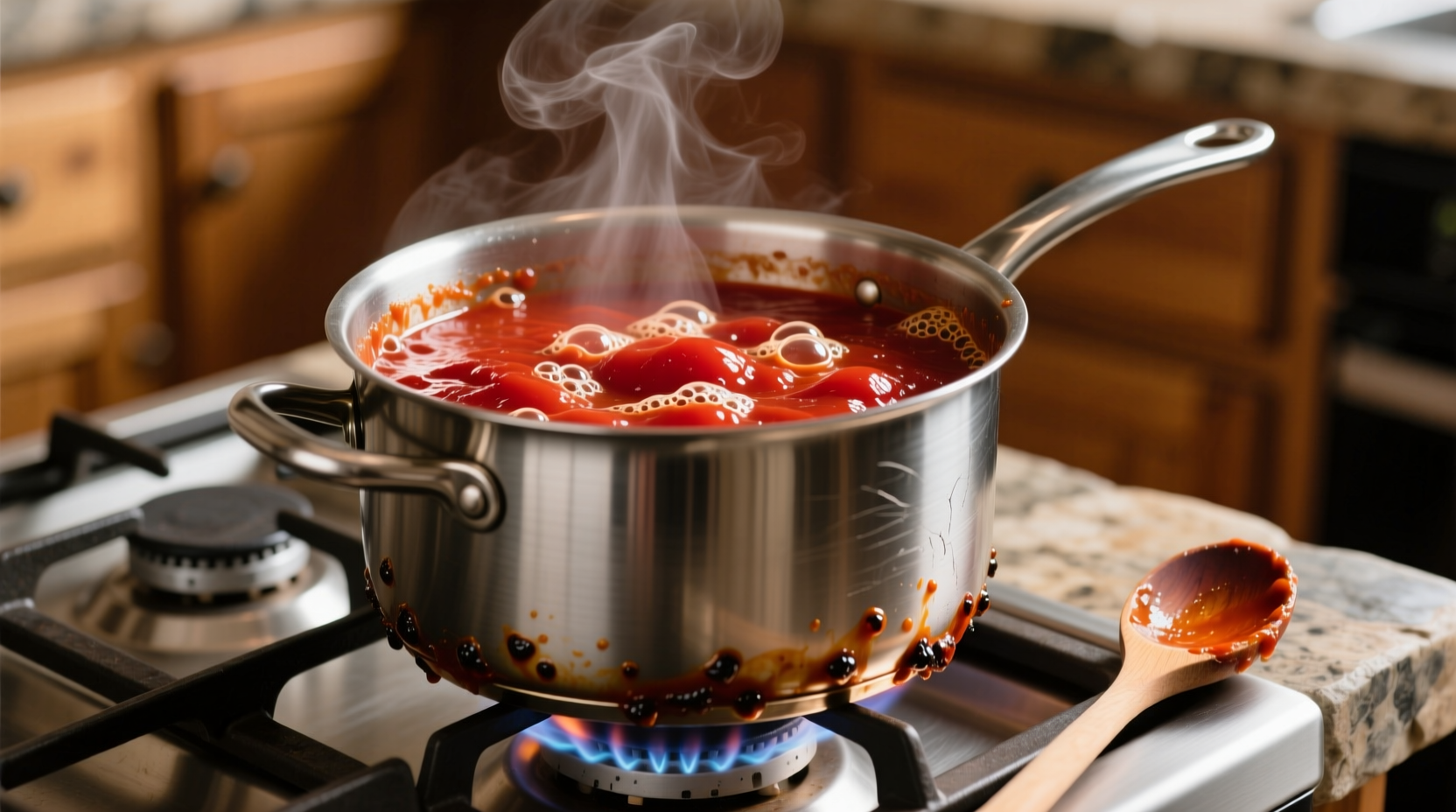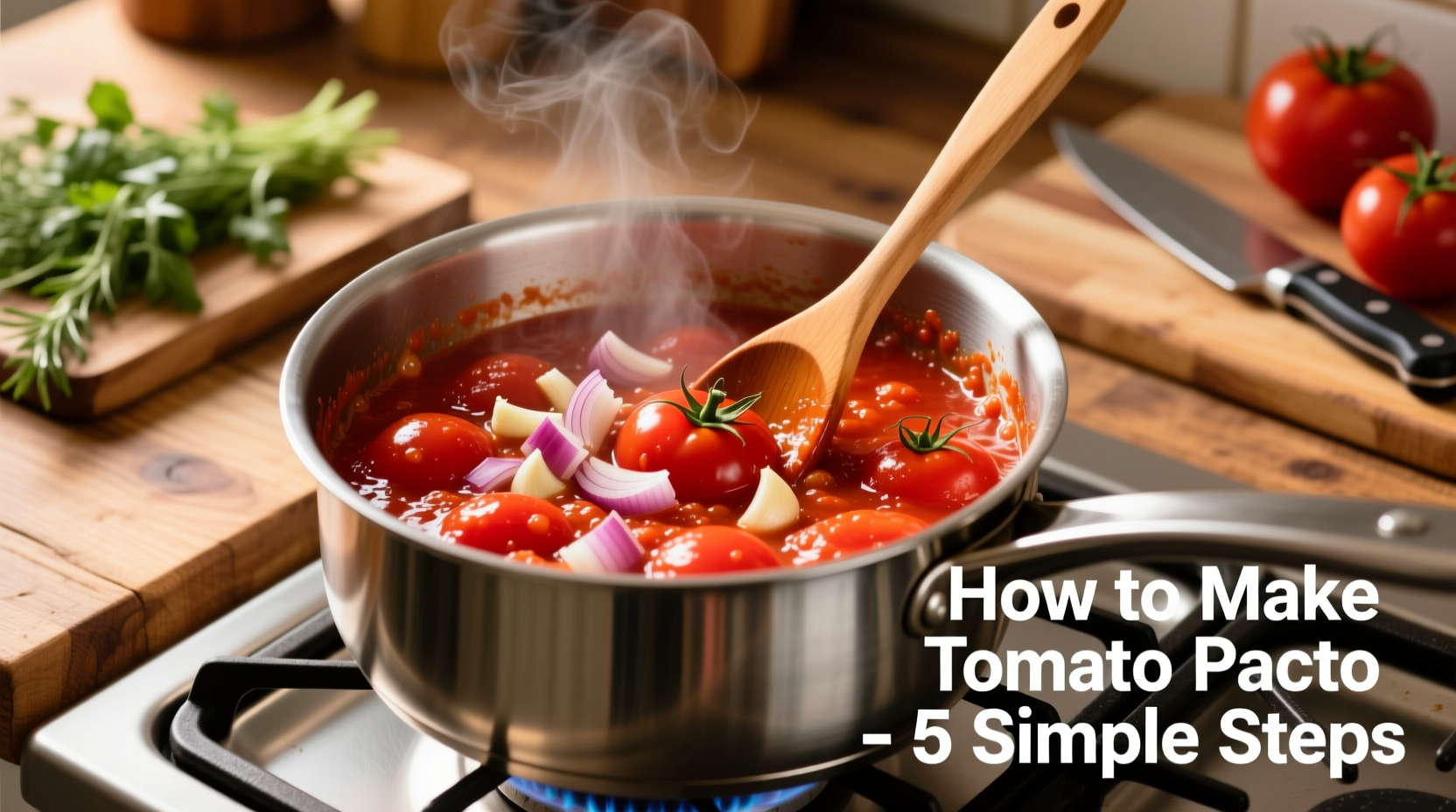Creating authentic tomato paste from scratch transforms ordinary tomatoes into a rich, versatile pantry staple. Unlike store-bought versions that often contain preservatives, homemade tomato paste delivers pure, intense flavor that elevates sauces, soups, and stews. Whether you're preserving summer's bounty or seeking cleaner ingredients, this guide provides everything you need to master the process.
Why Make Your Own Tomato Paste
Commercial tomato paste frequently contains citric acid, calcium chloride, and other additives to extend shelf life. Homemade versions offer three distinct advantages:
- Pure flavor profile - Uncompromised tomato essence without chemical additives
- Cost efficiency - Uses 7 pounds of fresh tomatoes to yield 1 cup of paste (vs $3-4 for store-bought)
- Preservation control - You determine salt content and processing method
Essential Ingredients and Equipment
You'll need just three basic components and common kitchen tools:
| Category | Items Needed | Notes |
|---|---|---|
| Ingredients | 7 lbs ripe tomatoes, 1 tsp salt | Roma tomatoes preferred for lower water content |
| Equipment | Large pot, food mill, storage containers | Stainless steel recommended to prevent metallic taste |
| Optional | 1 onion, 2 garlic cloves, olive oil | For flavor variations (see section 5) |
Step-by-Step Preparation Process
1. Tomato Selection and Preparation
Choose fully ripe Roma tomatoes for optimal results—they contain less water and more solids than other varieties. Wash thoroughly, then remove stems and any blemishes. While some traditional methods call for peeling, modern food science shows that tomato skins contain valuable pectin that aids thickening. Simply quarter the tomatoes to expose more surface area.
2. Simmering and Reduction
Place tomatoes in a heavy-bottomed pot over medium heat. Add salt to draw out moisture. Bring to a gentle simmer (not boil) and maintain for 3-4 hours, stirring every 20 minutes. The USDA Food Safety and Inspection Service recommends maintaining temperatures above 140°F throughout cooking to prevent bacterial growth. As water evaporates, the mixture will transform from liquid to thick paste.

3. Straining and Final Thickening
After 3 hours, pass the mixture through a food mill to remove seeds and any remaining skin fragments. Return to low heat for 30-60 minutes until it reaches your desired consistency—when a spoon drawn through the paste leaves a clear trail that doesn't immediately fill in. Properly reduced paste should coat the back of a spoon without dripping.
4. Storage Methods for Maximum Freshness
According to National Center for Home Food Preservation guidelines, properly processed tomato paste maintains quality for:
- Refrigeration: 2 weeks in airtight container with oil layer on surface
- Freezing: 12 months in ice cube trays for portion control
- Canning: 18 months using pressure canning at 11 pounds pressure
Historical Evolution of Tomato Paste Making
Tomato paste production has evolved significantly since its Mediterranean origins:
| Era | Method | Significance |
|---|---|---|
| 1800s | Sun-drying on marble slabs | First commercial production in Naples, Italy |
| Early 1900s | Steam-powered reduction kettles | Enabled mass production while preserving flavor |
| Modern Era | Vacuum concentration technology | Commercial standard that home cooks can approximate |
When Homemade Makes Sense: Practical Boundaries
While rewarding, homemade tomato paste isn't always practical. Consider these context boundaries:
- Seasonal advantage: Best made during peak tomato season (July-September) when prices are lowest
- Time investment: Requires 4-5 hours active monitoring—ideal for weekend projects
- Scale considerations: Most economical when processing 7+ pounds at once
- Quality threshold: Store-bought preferable when needing immediate use or consistent commercial texture
Troubleshooting Common Issues
Problem: Paste won't thicken properly
Solution: Increase heat slightly while maintaining gentle simmer. The critical factor is surface area—use a wider pot to accelerate evaporation. Remember that paste continues thickening as it cools.
Problem: Bitter aftertaste
Solution: This indicates over-reduction or high-heat scorching. Next time maintain lower temperature and stir more frequently. A pinch of sugar can counteract mild bitterness in finished product.
Flavor Variations for Culinary Creativity
Professional chefs often enhance basic tomato paste with these techniques:
- Mediterranean style: Add 1 chopped onion and 3 garlic cloves during initial simmer
- Smoky depth: Incorporate 1 tsp smoked paprika during final thickening phase
- Sweet balance: Stir in 1 tbsp balsamic vinegar when cooling for complex acidity
These variations demonstrate how small adjustments create dramatically different flavor profiles while maintaining the core how to make tomato paste from fresh tomatoes technique.
Maximizing Shelf Life: Food Safety Essentials
Proper storage prevents spoilage and maintains quality. The National Center for Home Food Preservation recommends these specific protocols:
- Cool paste rapidly in an ice bath before refrigerating or freezing
- Leave 1-inch headspace in containers to accommodate expansion during freezing
- Always use clean utensils when accessing stored paste to prevent contamination
- Discard if mold appears—do not attempt to scrape off
Using Your Homemade Tomato Paste
One cup of homemade paste equals two 6-ounce cans of commercial product. For best results in recipes:
- Dilute with equal parts water when substituting in sauce recipes
- Add during early cooking stages to allow flavors to meld
- Use frozen cubes directly in soups without thawing
Mastering how to make tomato paste without additives opens doors to cleaner ingredient lists and deeper flavors in your cooking repertoire.











 浙公网安备
33010002000092号
浙公网安备
33010002000092号 浙B2-20120091-4
浙B2-20120091-4